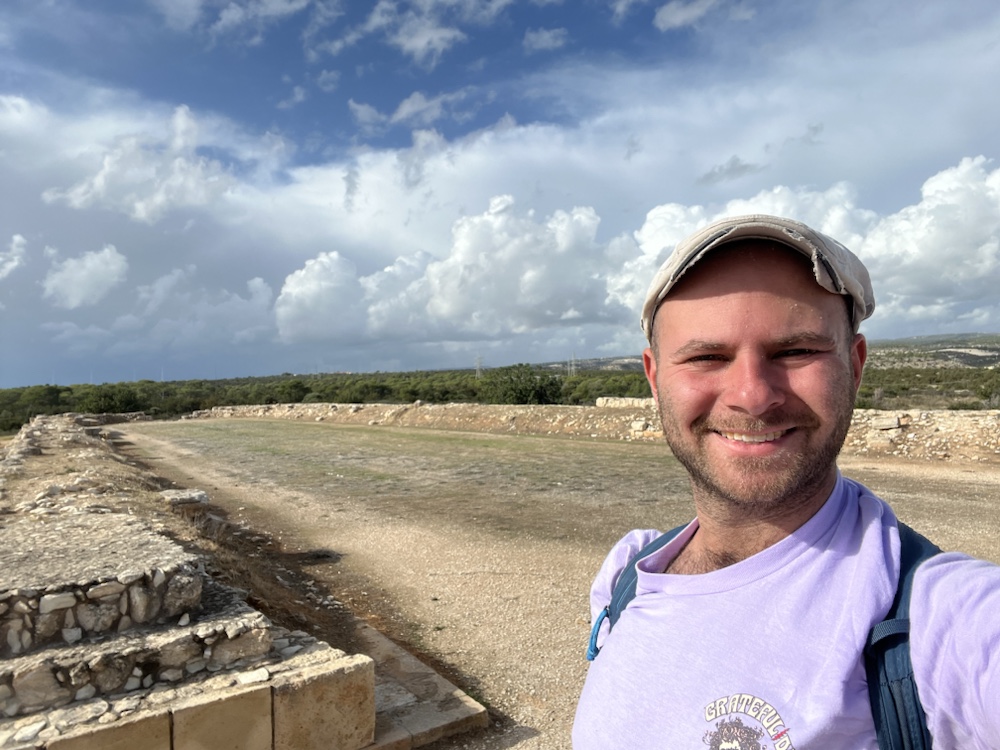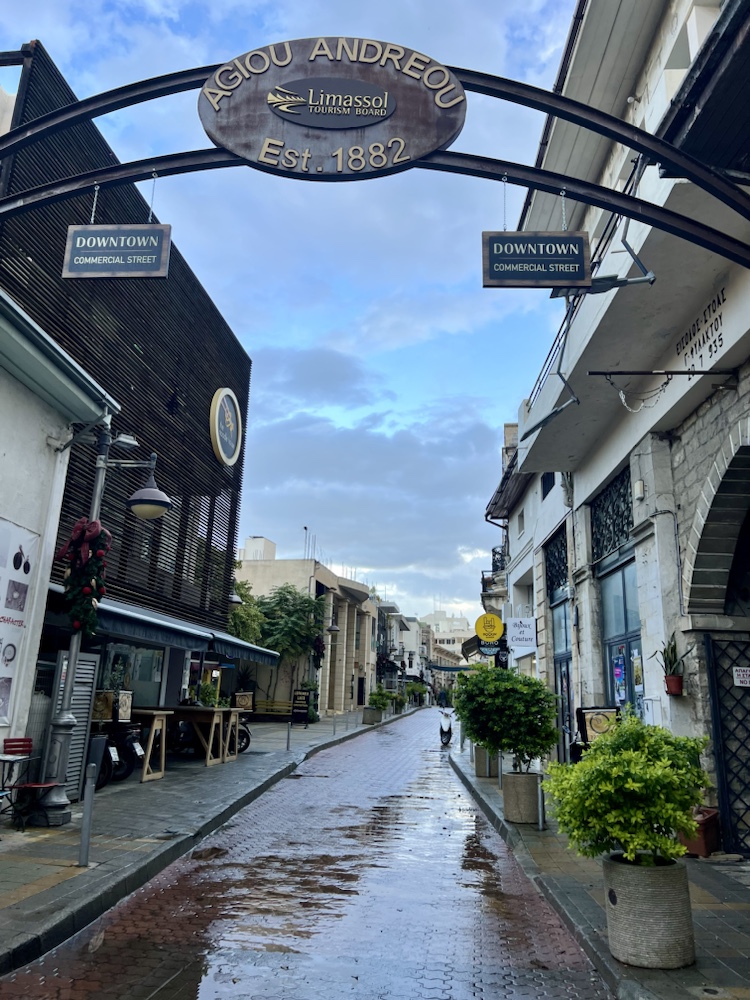Limassol
I take the bus first thing from Paphos across Cyprus to Limassol, but I arrive in the pouring rain. I wait it out, drop my luggage at the hostel, and catch the bus out to the ancient greek city-state of Kourion. The Greek amphitheater has Roman renovations, and much of the Roman ruins here feature early Christian era villas. They have symbols, classic gladiator motifs and mythology displayed on mosaics.



The remaining Roman marble pillars stand tall against the Mediterranean Sea, its edge lined with steep cliffs. One pillar has a corkscrew pattern I adore. I have to backtrack through the park to exit, which is annoying, and it’s hot under the sun, but I finally make it up to some more ruins.



A Roman stadium, just the remains of a wall in an oblong oval shape, is on the path. There is a nature trail, so I leave the hot road in favor of the scrub forest filled with wild thyme and sage. I see a kestrel overhead and a black snake slithers across the path out of sight.



On the horizon, shining in the sunlight against the dark storm clouds, is the Temple of Apollo. This site has been in use since ancient times, then became an early Apollo shrine. The Greek portico got a Roman upgrade by Emperor Trajan, who added his own additions to the temple. Legend has it that whoever touches the sacred altar of Apollo gets cast into the sea. I didn’t take my chances and kept my distance—but got close enough to appreciate the details. Some more remains of Roman bath heating systems are on display.



I hurry back as the rain begins to pour, sprinting downhill to shelter from the storm. I wait for the bus to take me back to town as the sun returns.



The downtown area is charming in the “old center”. It seems quite modern with trendy cafes and a modern agora filled with restaurants. I walk along the harbor to watch the sunset as I check out the sculpture garden; it’s a bit too abstract for my tastes. I have a delicious chicken Tikka wrap and walk along the Greek-style monuments. There is a large mosque and a church that I admire from the outside. I stop for some loukamades (greek donuts) that I customize with riccota, honey and cinnamon—a divine combination.



The city is pretty cool and I’m glad I decided to stay the night.













































